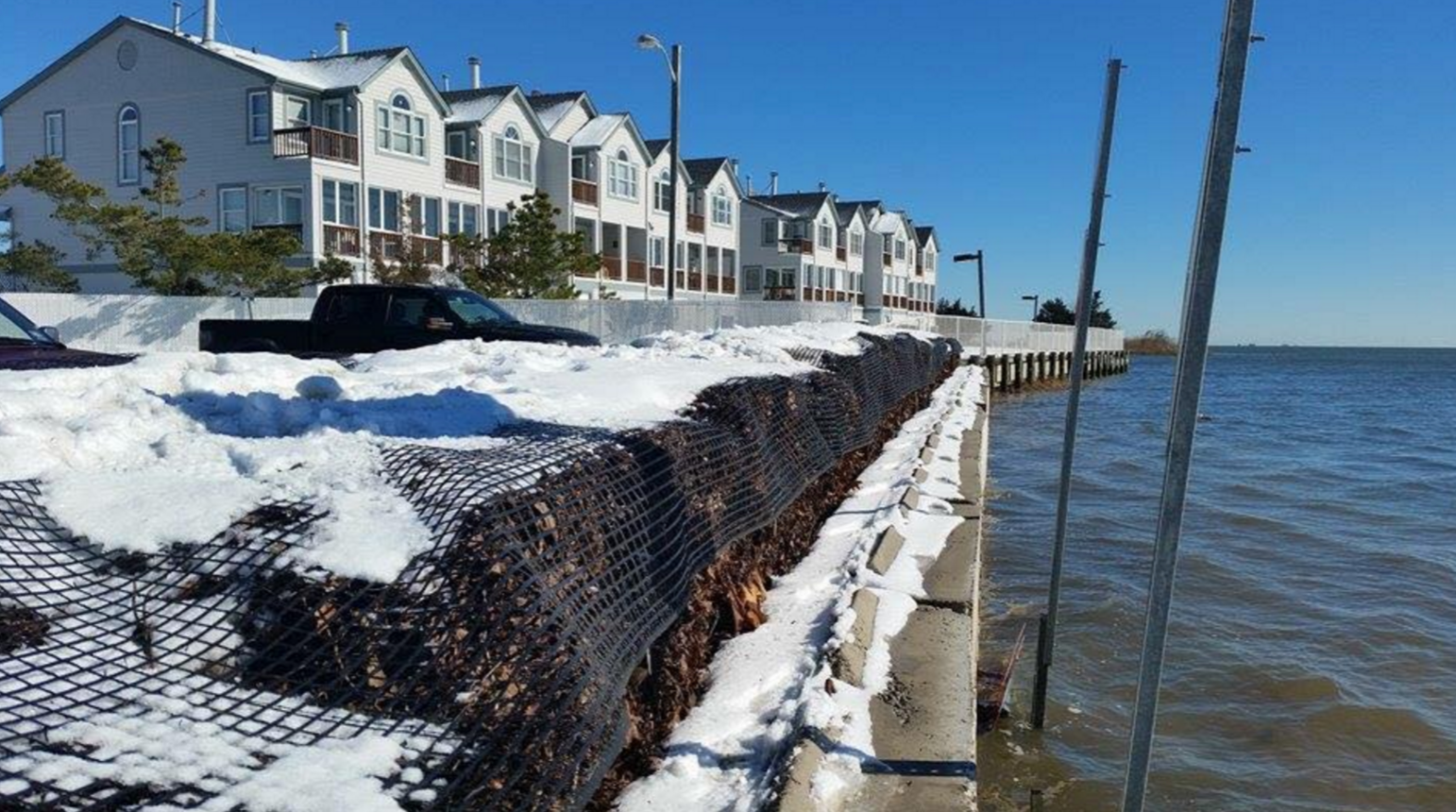Could leaf bales be the antidote to back bay flooding?

Protective leaf bales at the end of Radio Road in Little Egg Habor in late January. (Photo courtesy of Rob Libonati/Mystic Island, NJ Community Thoughts)
While tidal flooding was common — and in some cases, severe — along the back bays during the late January blizzard, a simple solution protected a southern Ocean County community.
Prior to the storm’s arrival, a Little Egg Harbor public works crew placed more than 60 leaf bales along the Great Bay at Radio Road and at the Parkertown Docks in the township.
Public Works Superintendent Patrick Donnelly tells TheSandPaper.net that Nature’s Choice Corp. donated the compost bales, that weighed between 32,000 and 38,000 pounds, which effectively served as a “breakwall.”
And it worked.
Donnelly says the fastened bales “did not move,” saving the municipality “thousands of dollars” in potential damage costs, TheSandPaper reported.
In a video shot in front of the wall during the storm, the superintendent commented that the wall was “doing its job.”
“We would have water all the way out to my truck, which is about 30 feet off the wall,” he said.
But the environmentally-friendly wall is not permanent. The leaf bales, which are easy to remove and reintroduce when needed, are now gone, although officials are discussing long-term solutions.
Residents of the low-lying area, which typically experiences tidal flooding and was hit hard by Superstorm Sandy, are also pleased.
Rob Libonati, a resident of the Mystic Island section of the township and publisher of the “Mystic Island, NJ Community Thoughts” page on Facebook, is a proponent, along with numerous commenters on his page.
“I love the fact that it’s a reusable green material and worked wonders for our problematic tides along Great Bay during the recent storms,” he said. “DPW Superintendent Donnelly and township officials should be commended for introducing this innovative idea to the township. This is a perfect solution for tidal mitigation for the often forgotten residents of back bay communities.”
But Dominick Solazzo, an Ocean County protective dune specialist and founder of Shifting Sands, a non-profit coastal conservation organization, is skeptical of using bales as a long-term solution.
“It seems like a nice ‘green’ approach towards flood mitigation, but it’s only a temporary fix equivalent to keeping pressure on a gunshot wound,” he said. “The bales can only be placed with heavy machinery and once inundated with salt water have little value as being an additive to create usable compost.”
According to Solazzo, coastal communities require more substantial mitigation.
“In order to maintain a sustainable habitat for humanity adjacent to tidal waters, we are going to need to make more drastic changes than using bales of municipal leaves,” he said.
Share your opinion on JSHN here.
WHYY is your source for fact-based, in-depth journalism and information. As a nonprofit organization, we rely on financial support from readers like you. Please give today.

